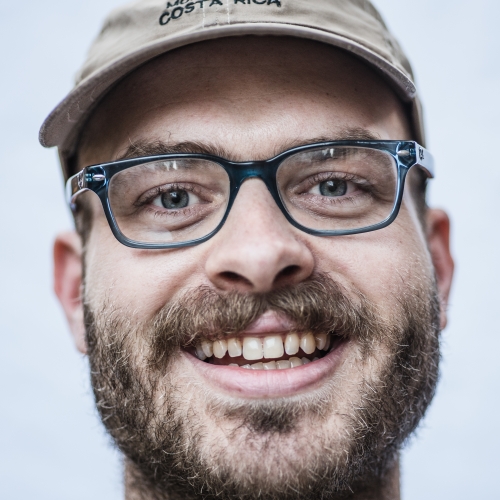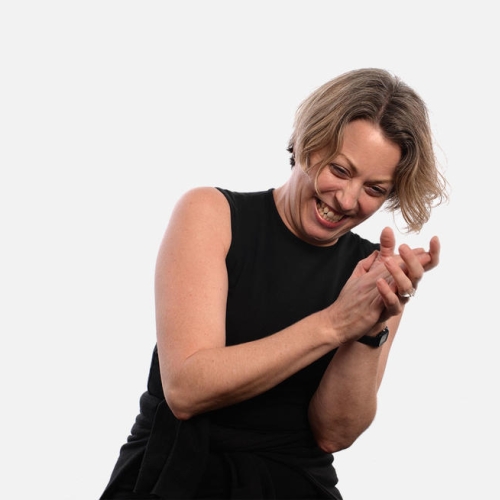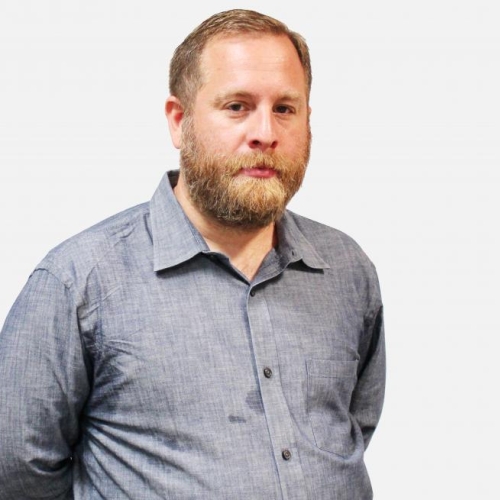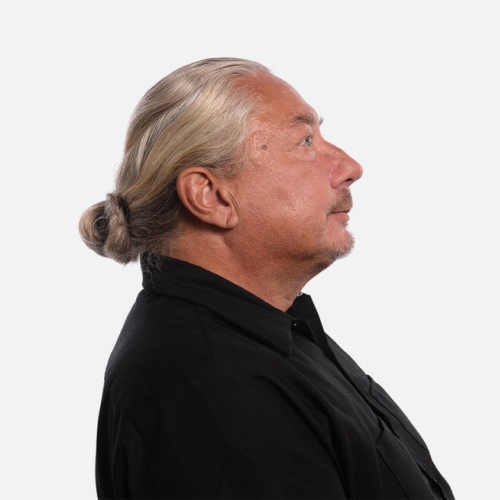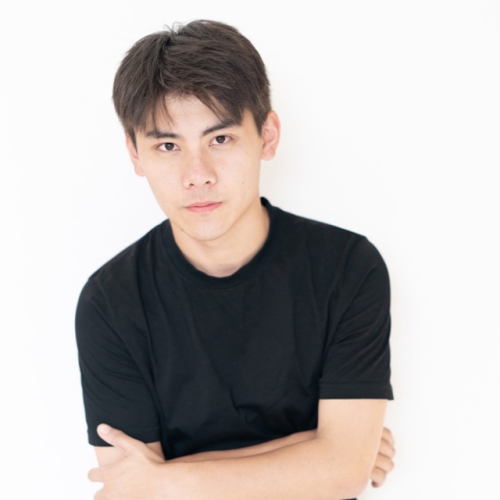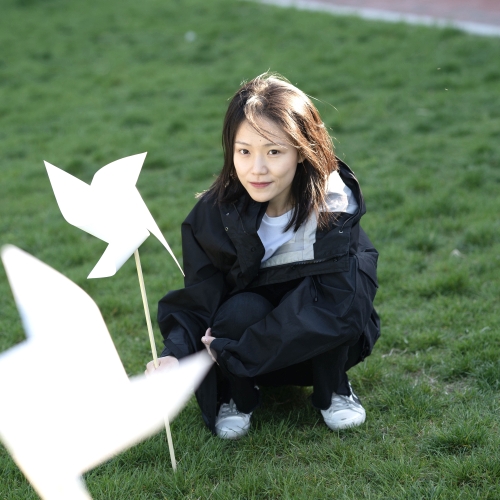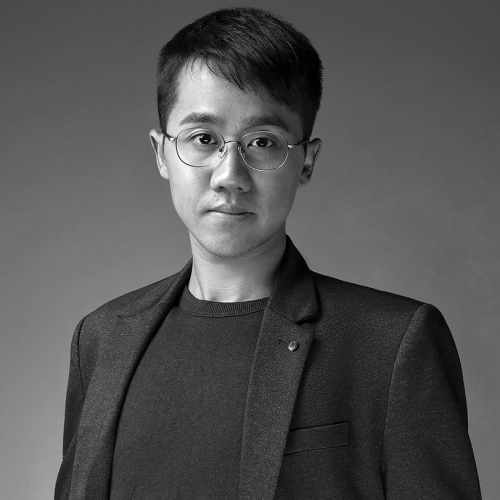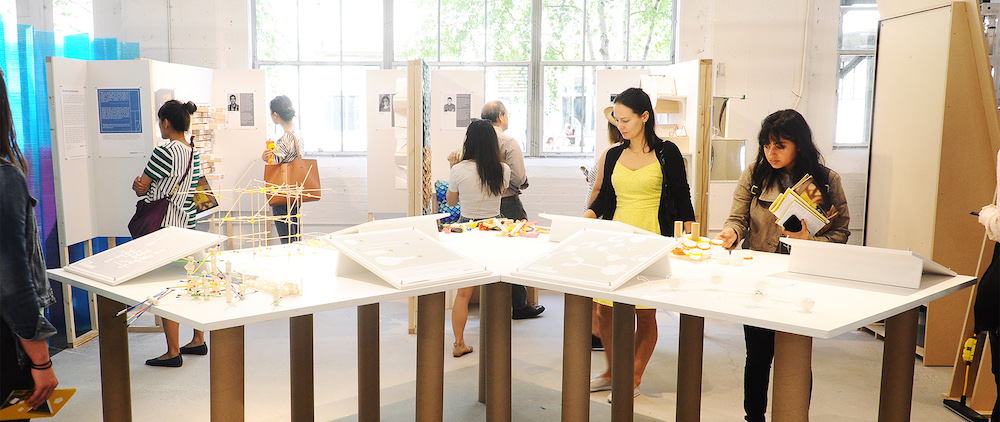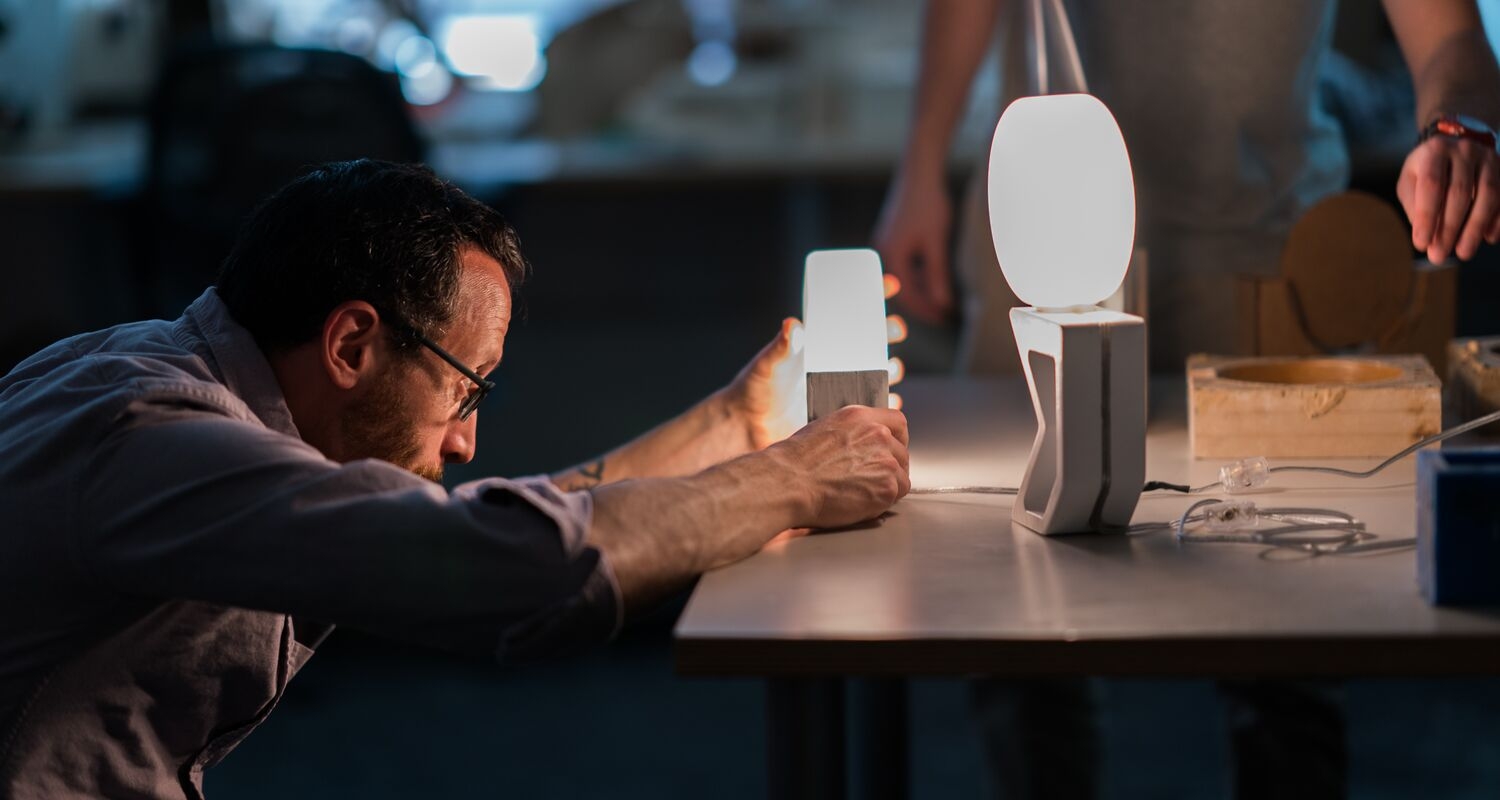
Product Design (MDes)
Product Design Master’s Program
The Master of Design in Product Design is a two-year, 60-credit degree program that has at the core of its curriculum a focus on human-centered design, maker culture and entrepreneurship. The program explores the nature of materials, products and manufacturing from a regional and global perspective, using Philadelphia’s urban core as a laboratory for design intervention and innovation. With opportunities to work both in Philadelphia and abroad, the master's in Product Design brings together an international cohort working to solve diverse social, economic, technical and material challenges.
Who Should Apply?
Open to those holding a bachelor’s degree in art, design, architecture, engineering or business/marketing fields, the MDes in Product Design program is for graduate students looking to build sustainable products and businesses.
Learning from Exceptional Faculty
An international student body learns from faculty who are professionals and entrepreneurs in home goods; robotics; interactive, industrial and sustainable design; technology; and other fields.
Product Design (MDes) Student Projects

People need socialize, so do their dogs. The goal of this design project is to create a place where both pets and their owners can socialize together. It’s like a dog park, but more than a dog park.

An alternative lunch bag with a detachable tray. It unwraps perfectly onto one’s lap, providing the user with a perfect surface to enjoy their meal on.

Oho is a trash lid that transforms your ordinary trash can into a beautiful piece of art, while also adding extra utility. Inspired by the the aperture mechanism, Oho makes it easy for its users to control the appearance and air flow of their trash can and keep all the gunk hidden away!

Casa Mia is a lamp but also an interactive educational device that encourages users to form a habit that put their essential everyday objects back into their belonging places.

Element
Project Type: Product Design/Furniture Design
Material: Powder Coated Steel, Rosewood/White Oak, Brass
Year: 2019

The Resurfacing project is an exploration of modularity textile design. The open ended design of this project is derived from the question: how can modular design improve the current manufacturing method in a household goods upholstery context?

Utifold is a crowdfunding product delivery by K&K Lab that aims to provide dine-out users with a portable, reusable, and functional plastic utensil set, improving their carrying and using experience.

The Cloud wine racks give consumers control over the size and the shape of their desired wine rack. The Cloud offers an artistic and creative experience to the consumers in order to come up with creative arrangements of the rack depending upon the geometry and the interior design of the space where the Cloud might be located.

Designing Hope is a socially friendly head support for patients with cerebral palsy.

A multitask magazine rack designed with the open wings of a swan as the main inspiration.

Geometric Space is a modular shelf organizer. It helps users at organizing their shelving space more efficiently, within their existing IKEA shelves.

This emotive interactive device is designed to enable two individuals to “sense” the presence of each other even though they may be physically apart.

Spark is a family of customized jewelry stands, which consists of a mirror, a base and two stands. “Beyond shine, Brightest star,” is the slogan of Spark as it's inspired by fireworks.

Lighting is a key factor in creating a successful image. Artificial lighting equipment exists for professional photographers. However, there is a large market of users who take high-quality photographs and video with their smart mobile phones, “ i ” Create lighting kit offers those users a well-designed light system specifically for this kind of photographies and videos.

Interspace Shelf is made by bending a single piece of acrylic. By keeping production simple, the design allows for increased outcomes and variety of installation options. The product is design to be seen what’s been stored inside and above.

Theta is a contemporary design developed using a hybrid process of laser cutting and ancient artistic techniques in glassblowing.

Terra Shelf: A modular shelving system.
The Terra Shelf affords its user an extra degree of creative freedom in shelving and display.

Fold & Transform pushes origami’s capacities beyond the traditional decorative arts.

The Pegg Shelving System is our response to the all too boring world of home shelving. With its modular format, the Pegg is entirely adaptable to your space.
Designers: Dachuan Chu MDes '19, Elmira Deldari MDes '20, Seth Gamson MDes '19 and Nhi Ton MDes '19

Flaer - Salt and Pepper Spinner Set
Flaer is primarily inspired by the shape and structure of windmills. The mechanism is inspired by studies done on how wind movements and particles behave in relation to one another.

Using felt, a flexible material, you can include self expression in your home with function and low impact while shelving everyday items for convenient access.

Toys 4 thoughts presents math using a combination of concrete objects and abstract representations.

“MIDAS” will be the first musical instrument fully designed for perception in the industry. It is a game-changer.
Student Project Successes
- Yike Liu MDes '20
- 2020 Bronze A' Design Award Winner in the Furniture, Decorative Items and Homeware Design Category for her project Spark
- Elmira Deldari MDes ’20
- 2019 Bronze A' Design Award Winner in the Bakeware, Tableware, Drinkware and Cookware Design Category for her project Cloud Wine Holder with team member and UArts alumni, Nhi Ton MDes ’19
- 2018 Silver A' Design Award Winner in the Furniture, Decorative Items and Homeware design category for her project Swan Magazin Rack
- Seth Gamson MDes ’19
- 2019 Bronze A' Design Award Winner in the Furniture, Decorative Items and Homeware Design Category for his project Terra Shelf
- Jinying Yu MDes ’17
- 2018 Silver IDA Design Award Winner in the Office Equipment / Stationery for her project White
- 2018 Bronze IDA Design Award Winner in Home Interior Products / Kitchen Accessories/Tabletop for her project Flaer
- 2018 Bronze IDA Design Award Winner in the Office Equipment / Furnishings/Modules for her project Potential
About the Curriculum
Sample Curriculum
Product Design is explored through contemporary techniques of design and fabrication, and the program is largely maker-studio based with an emphasis on haptic learning, collaboration and entrepreneurship. The two-year master’s program culminates with a highly self-directed experience in which students are expected to conceptualize a product and write a critical academic master’s thesis.
Total Credits: 60
Duration: 2 years, full time
With the exception of six general elective credits, all courses listed below are required.
Fall: 16.5 credits
Visual Communication (1.5c)
Semantics and Rhetoric of the Object (3c)
Design Research & Synthesis (3c)
Prototyping Studio (3c)
Cognitive Science of Interaction Design (3c)
Materials & Processes (3c)
Spring: 16.5 credits
Design Methods I: Physical Computing (3c)
Collaboration & Co-Design (1.5c)
Design for Sustainability (3c)
Design Seminar: Concepts and Contexts (3c)
Design Studio II (3c)
Fall: 15 credits
Design Methods II: Product Positioning (3c)
Advanced Prototyping Studio (3c)
Thesis Preparation (3c)
Business Planning & Practices (3c)
Advanced Design Methods (3c)
General Electives (3c)
Spring: 12 credits
Thesis Project (6c)
Thesis Documentation (3c)
General Electives (3c)
Explore the Full Curriculum
Featured Faculty
Our faculty of practitioners gives you access to currently practicing design professionals with backgrounds in fields in
- architecture;
- business and entrepreneurship;
- cultural anthropology;
- design strategy and research;
- environmental, industrial, interaction and social design;
- industrial systems;
- organizational development; and
- psychology.
Contact Product Design Program Director Matt Rhoades at mrhoades@uarts.edu.
Featured Alumni
UArts Product Design alumni are inventors and innovators, makers and disruptors.
The MDes Product Design program serves as a powerful launchpad for students and faculty working across industries, from healthcare and government to consulting for a range of consumer product and service companies. Other alumni go on to start their own businesses.
MDes Product Design Director Matt Rhoades and faculty member Anthony Guido will help students to prepare for their careers through mentorship opportunities, including portfolio review and internship referrals. Students have found internships and post-graduation employment at design consultancy firms, studios and corporations.
Companies alumni have worked for around Philly include: Amuneal, Design Science, Knoll, Penn Acceleration Lab, Think Company, Uarts, etc.
Annual Events
Each year, UArts Product Design students exhibit select projects at Wanted Design Brooklyn, an exhibition held at Industrial City in Brooklyn, New York.
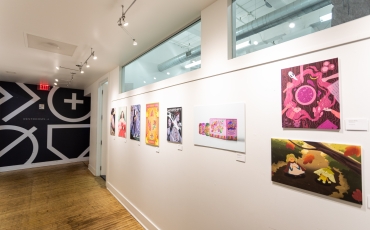
Liftoff! 2022
Liftoff! is the spring exhibition for the School of Design. It showcases student work from Graphic Design, Illustration, Product Design, and Museum Exhibition Planning and Design.
Facilities
Maker Resources: Hardware, Software & People
Founded on maker-movement principles, our student-run graduate studio is home to a full line of digital fabrication resources and is situated next to our more traditional industrial design wood and metal workshops.
A laboratory for ideation and testing, our facilities are stocked with a suite of digital tools, currently including
- 5-axis CNC routers,
- high-resolution 3-D printers,
- a 3-D scanner,
- a laser cutter, and
- solid and NURBS modeling CAD-CAM software tools.
An intensive studio experience is an essential part of our curriculum, in which students are expected to “fail forward” through hands-on scripting, programming, and building mockups and prototypes. The ultimate goal of the experience is to take concepts all the way from ideation, through ad-hoc engineering and into short-run productions as means of testing.
Center for Immersive Media
UArts’ new Center for Immersive Media (CIM) is a 5,600-square-foot facility dedicated to exploring the fields of virtual and mixed reality, performance motion-capture, and human-computer interaction. The space includes
- optical motion capture system for full body performance capture and location-based VR applications;
- a four-channel audio system, multiple video projectors and lighting, as well as a control station;
- 16-station computing classroom with PCs optimized for real-time graphics rendering; and
- two large project rooms with ceiling grids for development of installations and virtual environments.
Scholarships & Aid
All graduate applicants are considered for scholarships based on application materials, such as creative requirements and interviews, as well as prior academic and professional experience and achievements. Merit-based scholarships are competitive and vary in amount but make a considerable reduction in tuition cost.
In order to be eligible for named and endowed scholarships, students must maintain a GPA of 3.0 or higher.
Product Design Scholarships
Students eligible for the Gillespie Scholarship (founded by friends of Elizabeth Duane Gillespie) are nominated by Product Design faculty, with need determination by Student Financial Services. Approximately $1,500 is awarded annually from this fund to assist students with financial need—as determined by students’ FAFSAs—with their educational costs.
The Jane Darley Naeye Scholarship, a merit-based scholarship, is given to students nominated by faculty in Product Design and other programs related to interior design. Approximately $10,000 is awarded annually to multiple students.
Students eligible for the Richard J. Schneebeli Scholarship are nominated by Product Design faculty. Nominations are based on exceptional ability and demonstrated achievement in product design; approximately $400 is awarded annually.
Students eligible for the Fellowship award are nominated by Product Design faculty. Nominations are based on exceptional ability and demonstrated achievement in their second-year thesis project. Approximately $3,500 is awarded annually.
Financial Aid
If you need additional financial assistance, there are many options available. UArts offers four- and five-month payment plans for the fall and spring terms. You may also apply for additional loans in the form of federal Grad PLUS loans or private (also known as alternative) loans. You can find information about federal loans at studentaid.gov.
For many students, graduate school is a significant financial investment. Our Student Financial Services team offers one-on-one appointments to discuss personal finance, budgeting and best practices in saving and building credit. We strongly encourage you to take advantage of these resources. For more details and guidance in figuring out how to afford your education, visit uarts.edu/gradaid or contact Student Financial Services.
How to Apply
Application Deadline
Fall 2024 priority deadline: Applications received by Feb. 15 will be among the first considered for admission and scholarship. We will not accept any applications or materials after August 12.
Review graduate tuition, financial aid and scholarship information.
Application Requirements
-
$60 nonrefundable application fee
-
If the cost of the application fee is a barrier, contact Admissions to request a fee waiver code.
-
-
Official undergraduate transcript
-
Official transcripts must be sent directly from the college where you have earned, or will earn, your undergraduate degree by mail, email or a secure electronic document-delivery service.
-
If you have earned, or will earn, your undergraduate degree outside the U.S., see our transcript requirements for international graduate applicants below.
-
-
Two letters of recommendation
-
Two letters of recommendation from professors or professionals in your field, who are familiar with your capabilities, are required. In the case that these recommenders are not available, you may request letters from colleagues, collaborators or peers, if necessary.
-
Applicants must enter contact information for their recommenders on the application. An email will be sent to recommenders providing a link for them to upload their letter. Letters of recommendation may also be submitted by the recommender via email to gradcredentials@uarts.edu.
-
-
Statement of intent
-
Statements should be a minimum of one to two pages and detail your professional plans, interests and goals. What do you hope to gain by your studies at the graduate level?
-
Your statement of intent may be uploaded during the application process or added after submission via your applicant status portal.
-
-
Résumé
-
Your résumé should highlight all your professional accomplishments, including employment, internships, honors, exhibitions and publications.
-
Your résumé may be uploaded during the application process or added after submission via your applicant status portal.
-
-
Portfolio
-
MDes applicants should submit a portfolio of three to five in-depth pieces that showcase self-generated projects, professional assignments or work developed in a previous program. Each project may include a combination of drawings, graphic design, models, photographs, research, scenarios, videos, web design, writing and storytelling samples, etc.
-
The portfolio may be uploaded during the application process or via your applicant status portal after submission. You must confirm when your submission is complete via the linked electronic form before your portfolio can be reviewed for admission.
-
-
Interview
-
After the application has been processed, each applicant is contacted for a personal interview conducted by the program director. Interviews may be conducted on campus or by phone or Zoom.
-
International Applicants
In addition to the requirements listed above, international applicants or those with foreign credentials must submit
-
Official undergraduate transcripts
-
Applicants who have academic documents from institutions outside the U.S. are required to provide original, attested or certified true copies of academic records from the institution where they have earned, or will earn, their undergraduate degree. These records should be in the original language in which they were issued.
-
For postsecondary school records that are not in English, applicants must also submit an official translation of all their academic documents. Translations must be a complete, literal, word-for-word translation in the same format of the original academic document. Transcripts cannot be translated by the student or any members of their family. Acceptable translators include English teachers or other school officials, professional translators, or a local EducationUSA office.
-
Admissions might request that students obtain a course-by-course credential evaluation if we are not able to confirm the equivalent level to a U.S. undergraduate degree.
-
-
Proof of English proficiency
-
For international applicants whose primary language is not English, and who have not completed two semesters of college-level English in a college/university where the language of instruction is English, proof of English proficiency is required.
-
Recommended minimums for English proficiency exams are as follows.
- TOEFL iBT: 79
- TOEFL essentials: 8.5
- IELTS: 6.5
- Pearson PTE Academic: 53
- Duolingo: 100
-
Applicants who meet the academic and creative requirements for admission but whose scores do not meet the English proficiency requirement for degree study might receive an offer of conditional admission that requires enrollment in the university’s English as a Second Language Institute (ESLI). Applicants who successfully complete ESLI will then be able to begin their degree program studies in the fall semester.
-
In special circumstances, applicants who do not have access to the TOEFL, IELTS or Duolingo English tests can request a waiver of this requirement. The request should be submitted by email to admissions@uarts.edu. Requests will then be reviewed on a case-by-case basis and might require an interview.
-
-
I-20/F-1 international student visa information: Upon acceptance, students will be contacted by University of the Arts’ International Student Programs office, regarding visa counseling and all materials required to create an I-20 in order to obtain an F-1 visa. Contact Mara Flamm, director of international student programs, with any questions regarding your I-20 or F-1 visa.
Get Started
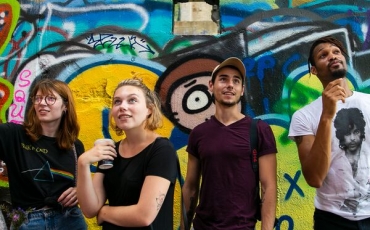
Start your application
Begin your application today. Our admissions team will help you throughout the process.
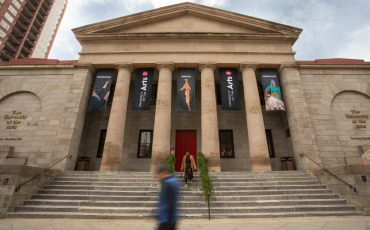
See UArts for yourself
The best way to get to know UArts is by visiting our campus in person. Come see a show, visit a gallery, and get to know the neighborhood.

Not sure where to start?
We're glad you want to learn more. Our admissions team is happy to send additional information about our school.



